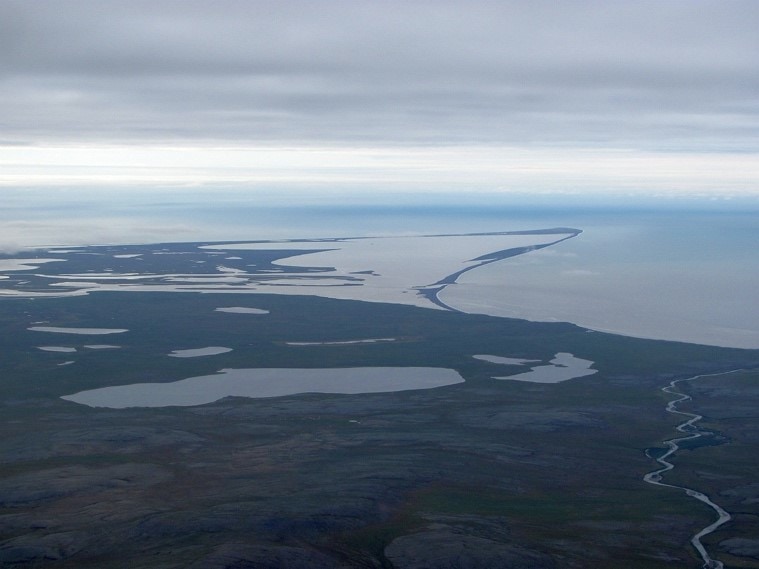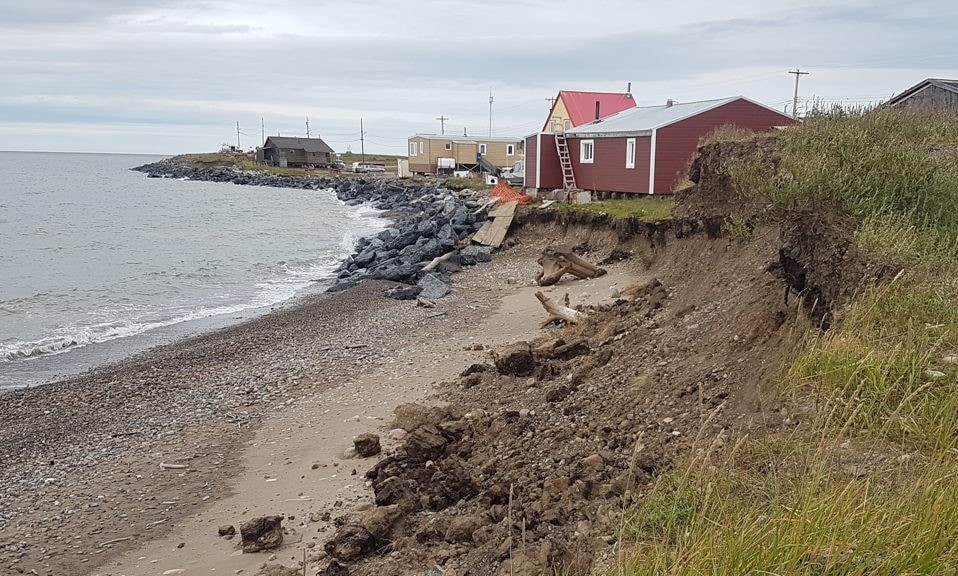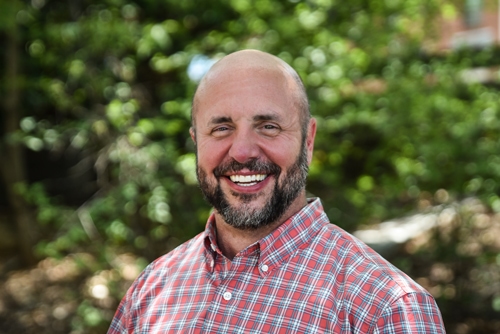Climate change is having a significant effect on Arctic communities. The loss of permafrost and ice sheets, sea level rise, and many other factors are putting people living in coastal communities and their traditional way of life at risk. In this episode, we’re talking with Jeff King, Deputy Lead of the Engineering With Nature program at the US Army Corps of Engineers; Sam Whitin, Coastal Resilience Director, EA Engineering, Science, and Technology, Inc; and Enda Murphy, Senior Research Engineer at the National Research Council of Canada (NRC). We’re discussing the unique challenges and opportunities involved in identifying and designing resilience strategies to help remote northern communities in Alaska and Canada whose future and way of life is imminently threatened by climate change. And we’re reflecting on how Engineering With Nature approaches could be used to address critical challenges faced by remote northern communities.
The Arctic region is warming at a much higher rate than other parts of the continent. Retreating sea ice, shorter ice season duration, and thawing permafrost are contributing to the destabilization of coastlines. And, as Enda points out, “a lot of these remote northern communities are really reliant on fishing and hunting and the land for subsistence and their livelihoods. That creates an even greater imperative to understand and adapt to the changing climate.” Sam adds that communities in Alaska are also experiencing significant issues related to erosion and flooding, along with impacts to migratory patterns of fish, wildlife and whales: “Given the close connection that these communities have related to subsistence hunting and fishing, climate change is magnified in even more ways than most people typically consider.”

Jeff, Sam, and Enda came together around their common interest of better understanding these impacts and responding to them by applying Engineering With Nature principles and processes. Jeff, through separate conversations with Sam and Enda, “saw a unique opportunity to engage and collaborate and bring more expertise into a region where it’s desperately needed.”
One upcoming EWN research project will focus on the whaling community of Point Hope, Alaska, whose traditional way of life is currently being challenged by the accelerating impacts of climate change. Sam talks about the example of ice cellars that have been used in Point Hope for thousands of years to store foodstuffs – fish, wildlife, and whale – throughout the year. The cellars are buried about 20 feet into the permafrost, which is melting due to higher average temperatures. Without those cellars to provide essential refrigeration and fermentation, the community has to harvest extra fish and wildlife throughout the year because there are no roads leading to the city, so outside supplies come in only by plane or once or twice during the summer by barge. This places additional pressure on the fish and wildlife populations and is an example of a problem that could benefit from an EWN approach, drawing on research and expertise from the Army Corps’ Cold Regions Research Engineering Laboratory (CRREL).
Similarly, Enda and the NRC have been working in Tuktoyaktuk, Northwest Territories, an Inuvialuit community very close to sea level on the Beaufort Sea. As Enda related, “We heard from elders that this particular community has had to relocate three residences just in the past year because of the rapidly eroding coast. So that’s a really urgent need.” Enda and his colleagues at the NRC are reimagining what future research in the Arctic might look like and broadening their networks and collaborations, to do research, including with the US Army Corps. A particular area of interest is in understanding the role of sea ice in attenuating or dissipating storm surge. Computer modeling has shown that without sea ice, storm surges may be three times higher, which is a significant problem for communities like Tuktoyaktuk.

A key challenge for researchers is that there is little existing baseline data to establish trends. So, engaging the people of these remote communities and gathering local knowledge is critical. Sam, Enda and their teams are sitting down with elders, hunters, and fishers to understand what they’ve seen and experienced. As Sam adds, “One of the most important things is to make sure that we respond appropriately to what the community truly wants, that we’re not coming in and presenting a problem that doesn’t need to be fixed or presenting our thoughts on how something should be handled. We are listening to and learning from the community.”
The opportunity for incorporating EWN approaches into projects in the far north, and the importance of collaborating and sharing information between the parallel work being done by Sam and Enda, plus the contributions of CRREL, are exciting to Jeff: “Thinking about Engineering With Nature and the natural infrastructure strategies that are appropriate for an environment like this is something very new. I think EWN can make an important contribution – and we will learn a lot in the process.”







